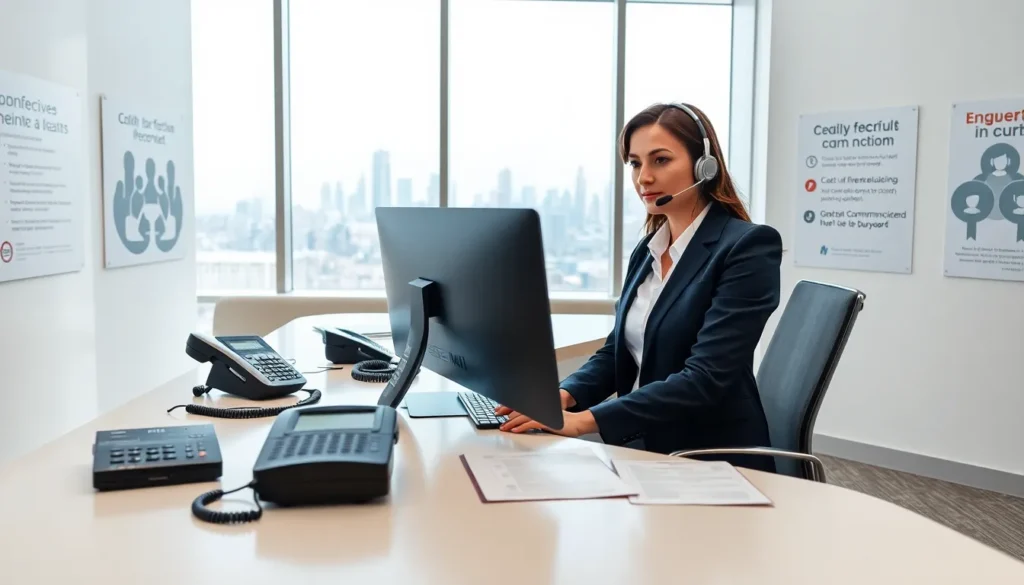Table of Contents
ToggleNavigating the world of jail communication can sometimes feel like solving a Rubik’s Cube – frustrating at first, but incredibly rewarding once you crack it. If you’re considering reaching out to someone behind bars, you might be surprised at how straightforward the process can be. It’s all about understanding the rules of engagement, setting up the right accounts, and mastering the art of the call. In this guide, we’re breaking down everything you need to know, with a sprinkle of humor to ease those nerves. Because let’s face it, when you’re trying to make contact with someone in jail, a little laughter can go a long way.
Understanding Jail Communication

Communication in jail isn’t as simple as picking up the phone and ringing the bell. In fact, different facilities have varying policies and methods for inmate communication. Some jails offer direct phone calls, while others rely on third-party services to help communication. Understanding these nuances is crucial before attempting to make a call. Each jail or prison follows specific guidelines about how inmates can communicate with the outside world. Eventually, this empowers families and friends to maintain connections in a challenging context.
For instance, some facilities allow inmates to call only approved contacts. This means the person you’re trying to reach must have registered your number beforehand. If he or she hasn’t, get ready for some creative strategies in flexibility and workarounds. Knowing the facility’s policies can save time and frustration.
Also check the jail’s website or contact them directly for the most accurate and updated information. The more you know about the communication process, the better prepared you will be.
Types Of Calls Allowed
When it comes to types of calls, it’s essential to jump into the nitty-gritty details. Generally, there are three main types of calls allowed for inmates: debit calls, collect calls, and prepaid calls. Each of these has different payment structures and implications for the caller and the inmate.
Debit Calls: These are pre-funded accounts where the inmate can spend funds to call someone. You’ll need to deposit money into the inmate’s account, and they can use that whenever they want.
Collect Calls: With collect calls, the receiving party agrees to pay for the call at the moment it’s made. This used to be more common, but due to fees, it’s dwindled in many facilities. Always ask about rates before choosing this option.
Prepaid Calls: This option requires setting up an account in advance, allowing you to load money into a prepaid account. The inmate can then use this to make calls, which can be beneficial both for budgeting and maintaining control over costs.
Understanding these types can also help in planning the best method of communication, ensuring you stay connected without very costly.
Setting Up A Jail Call Account
Setting up a jail call account is often the most tedious part of the process, but it’s well worth the effort. First step? Find out which service provider is associated with the specific jail. Most jails have contracts with specific third-party companies that manage calls, so checking the facility’s website is a good start.
Once you identify the right provider, creating an account typically requires basic information: your name, phone number, and sometimes your relationship to the inmate. Some providers may also ask for additional identification or verification.
After your account is set up, you will need to fund it. This usually involves adding money via credit card or bank transfer. Pro tip: be aware of any service fees that the provider may charge for deposits. It’s a smart idea to load up your account ahead of time to avoid running into issues when the call comes in. And hey, it’s just like filling your car’s gas tank, always good to have enough in reserve.
Using A Jail Phone System
Now that the heavy lifting is done, it’s time to jump into how to use the jail phone system efficiently. One primary rule? Be patient. The system can sometimes be slower than expected. When it comes to making a call, the inmate will initiate the connection, so make sure you’re near your phone when they try to reach out.
When the call comes in, you might hear an automated message explaining the call’s origin. It’s important to remember that these calls are often monitored, so it’s best to avoid sensitive topics, think of it as a very public conversation.
After the call connects, don’t forget to give the inmate some time to speak. Oftentimes, connecting after a long separation is emotional, and they may have a lot to share. Be ready to listen and communicate openly, offering support and keeping a positive tone throughout.
Preparing For The Call
Preparing for your call isn’t just about having a charged phone and a quiet space. It’s about mentally gearing up as well. Start by jotting down topics you want to discuss. Perhaps it’s family news, updates on friends, or just a good ol’ reminisce about trivial things that make you laugh. The call is a precious window into their life, so make it count.
Also, ensure you’re in a distraction-free environment to allow for a genuine conversation. Juggling the phone while trying to handle kids or pets isn’t the recipe for a heartfelt catch-up.
And, of course, remember to be supportive. Jail can be a tough environment, and your words can have a profound impact on someone’s mood and outlook.
Alternatives To Phone Calls
If phone calls feel too restrictive for your communication style, rest easy – there are alternatives. One popular option is writing letters. Sending a letter is a great way to express thoughts and feelings more thoroughly, plus it gives the inmate something to look forward to beyond the daily grind of jail life.
Another alternative is to use email services often provided by jails. Some facilities use systems that allow inmates to send and receive emails, albeit at a fee. This communication method is often quicker and can feel more immediate than letter writing.
Video calls are also gaining traction in many facilities. Depending on the jail, inmates may have access to video calling services that allow for visual communication, making those heartfelt connections feel a lot closer. Just make sure to check the facility’s capabilities beforehand.




